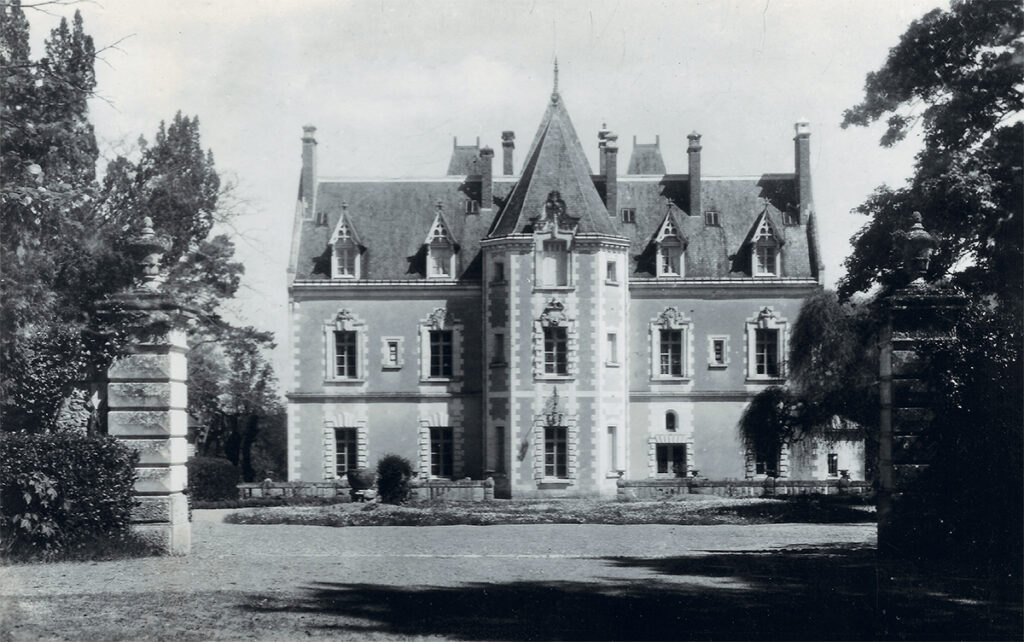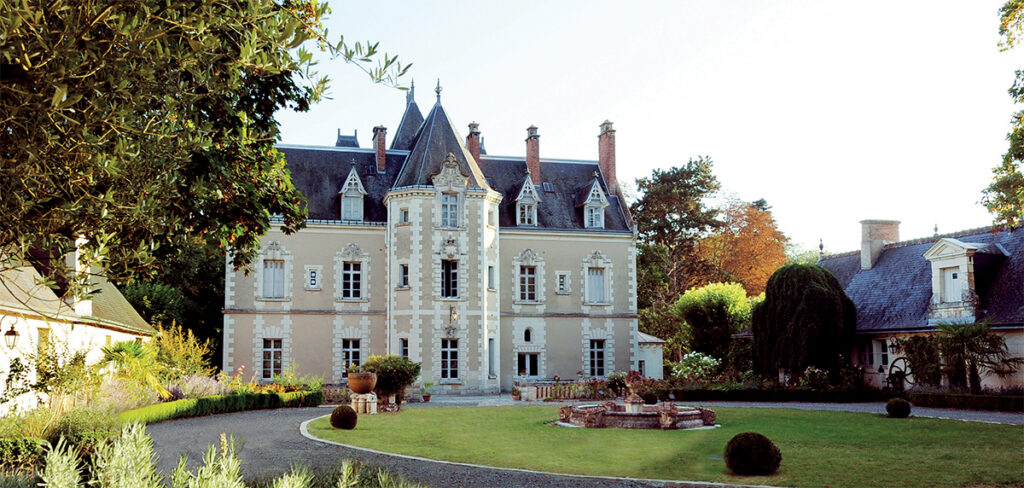The Chateau of Fontenay and the house called ‘du passeur’
㉓ The château of Fontenay and the house called ‘du passeur’
The castle was rebuilt in the 19th century after having been burnt down by the Prussians in 1871. The ferryman’s house evokes the period of Second World War, when some people tried to escape from the northern occuped area and needed the help of a ferryman to cross the river Cher.
| « | To go to stage ㉔ → There is still one stage : Les Grandes Fontaines. |
» |


A fortified dwelling stood on the site of Fontenay in 1350 before a rich bourgeois family from Tours built the first château in 1680.
In 1871, while owned by the architect and painter Auguste Bucquet it was burnt by the Prussians in an act of reprisal but was rebuilt on its earlier foundations in the form it is found today.
Below the property, stands a house called ‘du passeur’ (the boatman) reminding one of the time when a boat brought residents across the Cher. In the second World War, it was used as a secret passage from the demarcation line (the river was the demarcation line). Remains of the gallo-roman aqueduct which brought water from ‘Grandes-Fontaines’ towards the town of Tours can be spotted a bit further along the Cher.
Today the château of Fontenay is made up of 15 hectares of sustainably farmed vineyard with the AOP* label for Touraine and Touraine-Chenonceaux wines.
You can see the buildings of the Fontenay mill, which belonged to the château de Fontenay and were rebuilt in 1894 after a fire, just before you arrive at the château.
